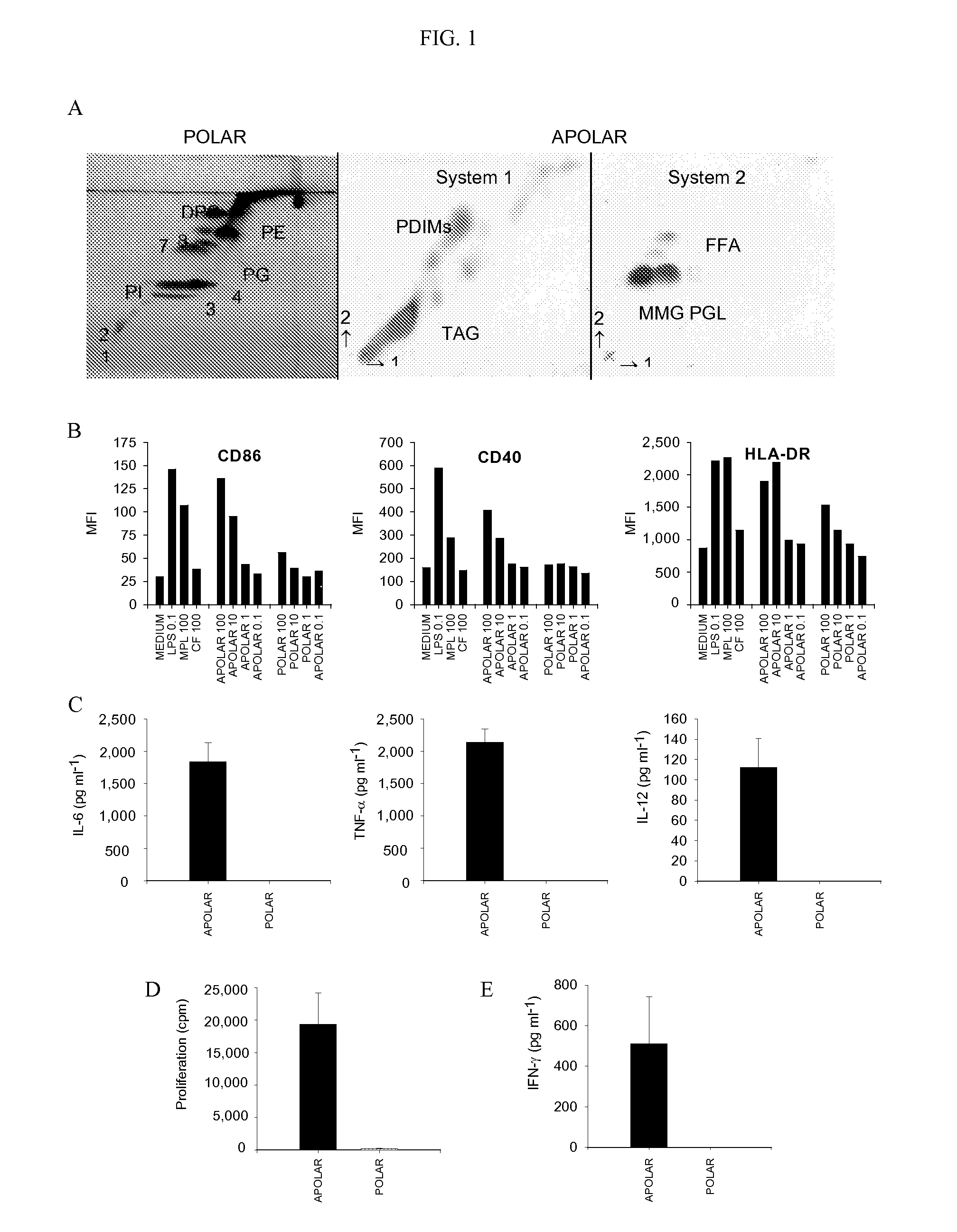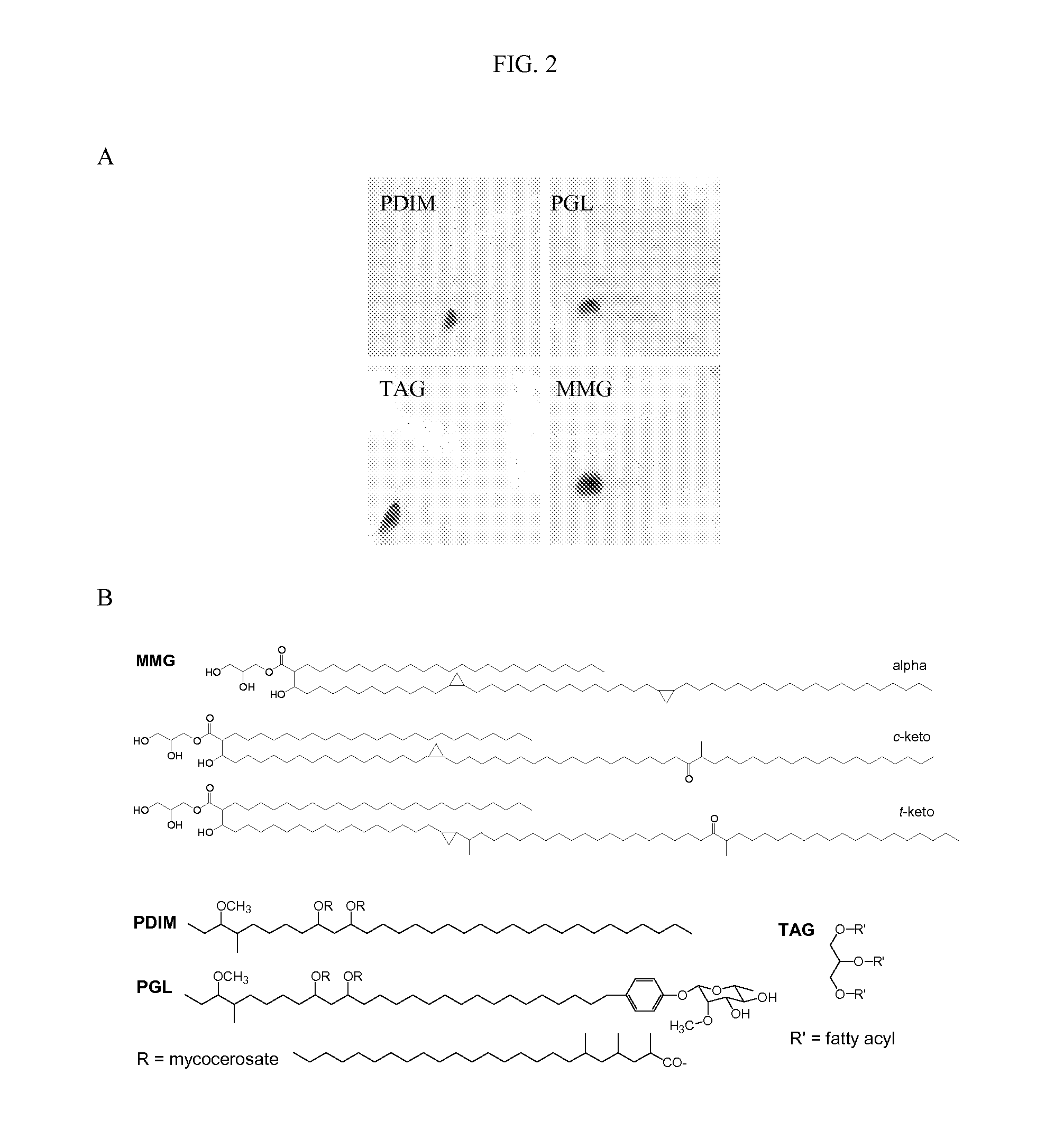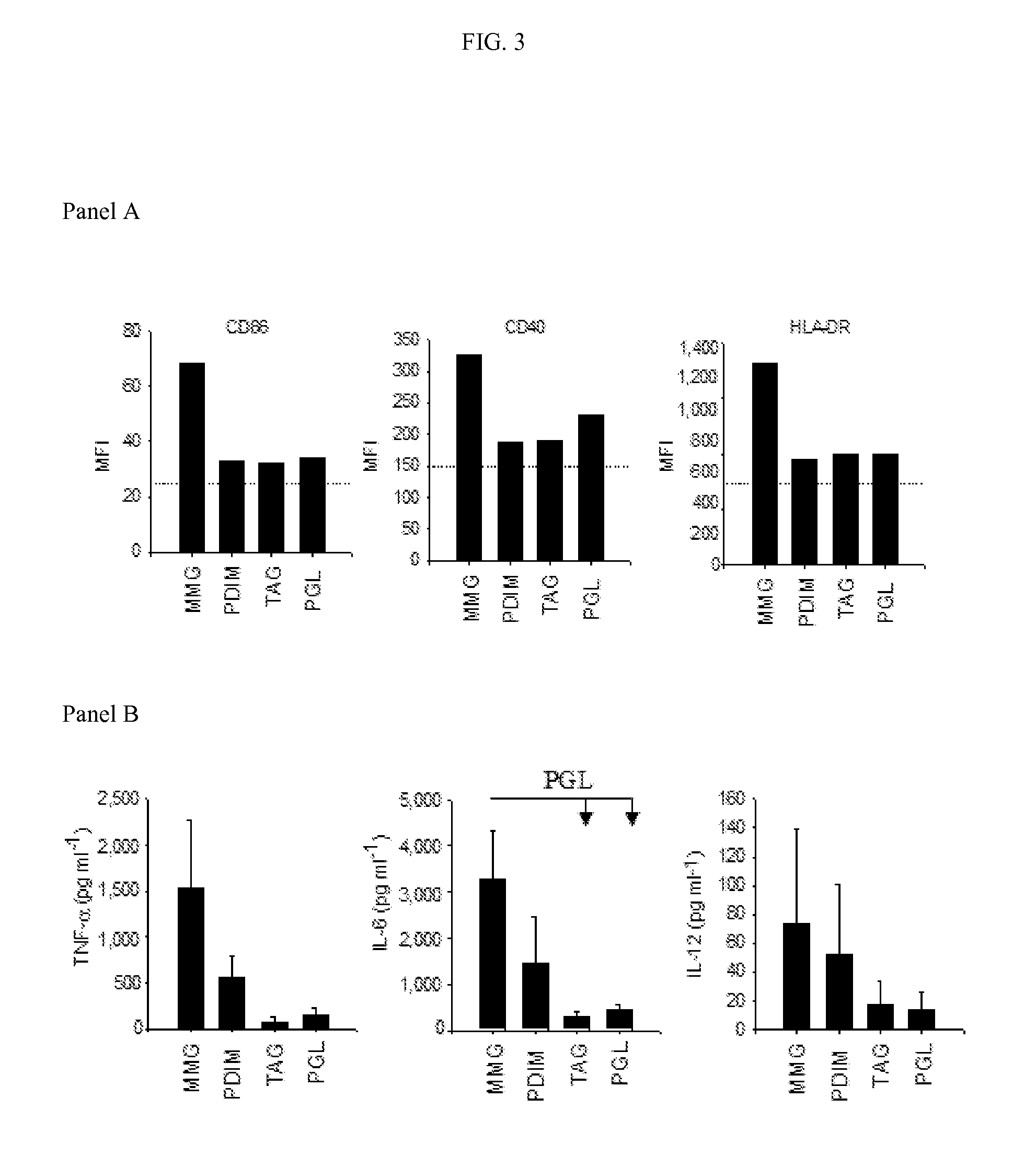Use of monomycolyl glycerol (MMG) as an adjuvant
a monomycolyl glycerol and adjuvant technology, applied in the field of use, can solve the problems of not always providing satisfactory resistance to human tb in every population, many highly purified substances are not very immunogenic, and inducing a sufficient immune response to confer protection
- Summary
- Abstract
- Description
- Claims
- Application Information
AI Technical Summary
Benefits of technology
Problems solved by technology
Method used
Image
Examples
example 1
[0097]Isolation and Immunostimulatory Activity of the Apolar Lipids from M. Bovis BCG
[0098]The total lipids of M. bovis BCG was separated into polar and apolar fractions. In the polar fraction the lipids that could be identified were phosphatidylinositol mannosides (1-4), phosphatidylinositol (PI), phosphatidylethanolamine (PE), diphosphatidylglycerol (DPG) and L-alpha-phosphatidyl-DL-glycerol (PG). A number of unknown phospholipids were also identified (7 and 8) (FIG. 1A). In the apolar fraction the major lipids identified were phthiocerol dimycocerosates (PDIMs), triacyl glycerols (TAGs), phenolic glycolipid (PGL) and monomycolyl glycerol (MMG) (FIG. 1). FFA is free fatty acids.
[0099]The comparative immunostimulatory activity of the apolar and polar lipids was examined using human peripheral blood monocyte-derived immature DC (iDC) (FIG. 1). Treatment with apolar lipids resulted in a dose-dependant elevation of the levels of the activation markers CD86, CD40 and HLA-DR as compared...
example 2
[0100]Isolation of Individual Lipids from the Apolar Lipid Extract of M. Bovis BCG and Characterisation of MMG
[0101]Lipids from the immunostimulatory apolar fraction were isolated using preparative TLC to give pure samples of phthiocerol dimycocerosate A (PDIM A), TAGs, PGL and MMG; minor amounts of phthiocerol B and phthiodiolone A were also detected but were not recovered by the preparative methods employed (FIG. 2A). The structure and identities of the lipids were confirmed by 1H nuclear magnetic resonance (NMR) and mass spectroscopy (MS) (FIG. 2B and data not shown). The MMG component displayed 1H and 13C NMR spectra characteristic of a 1-monoacyl glycerol (Gunstone et al, 1991). MALDI-TOF MS coupled with the NMR data of the total MMG fraction (Table 1) revealed the presence of alpha-mycolate and keto-mycolate in the cis and trans form. The approximate ratio of the main components was 1.00:0.29:0.24, respectively.
[0102]
TABLE 1MALDI-TOF mass spectrometry of purified MMG.MMGc-keto...
example 3
[0103]Activation of Human Dendritic Cells by MMG
[0104]Purified MMG, PDIM A, PGL and TAGs were evaluated for their ability to activate human iDC. In these assays MMG was consistently found to be the most potent inducer of DC activation leading to a pronounced upregulation of CD86, CD40 and HLA-DR (FIG. 3A). MMG even activated DCs more than PDIM A, a lipid that has long been associated with the pathogenicity of Mycobacteria (Cox et al, 1999), that emerged as the second most active lipid, while PGL and TAGs induced less activation. In six individual donors the order of activation was observed as MMG>PDIM A>PGL>TAGs and the mean fold increase in CD86 levels above levels associated with untreated iDC were 1.91±0.29, 1.82±0.43, 1.52±0.26 and 1.32±0.14, respectively. Cytokine induction followed the same overall trend (FIG. 3B) with MMG standing out as the most potent immunostimulatory lipid. IL-6 was released by DC exposed to MMG at significantly greater levels (PM. bovis BCG.
PUM
| Property | Measurement | Unit |
|---|---|---|
| temperatures | aaaaa | aaaaa |
| wet weight | aaaaa | aaaaa |
| volume | aaaaa | aaaaa |
Abstract
Description
Claims
Application Information
 Login to View More
Login to View More - R&D
- Intellectual Property
- Life Sciences
- Materials
- Tech Scout
- Unparalleled Data Quality
- Higher Quality Content
- 60% Fewer Hallucinations
Browse by: Latest US Patents, China's latest patents, Technical Efficacy Thesaurus, Application Domain, Technology Topic, Popular Technical Reports.
© 2025 PatSnap. All rights reserved.Legal|Privacy policy|Modern Slavery Act Transparency Statement|Sitemap|About US| Contact US: help@patsnap.com



